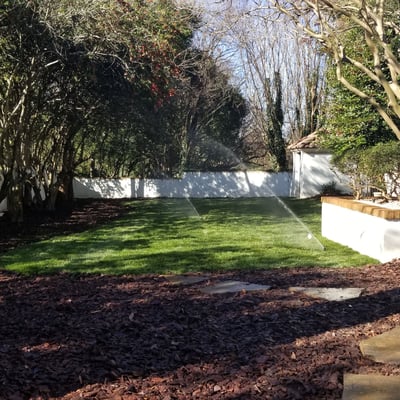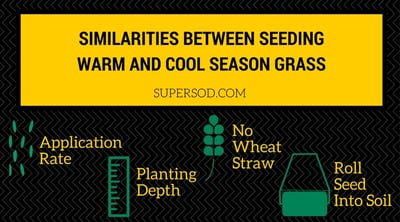
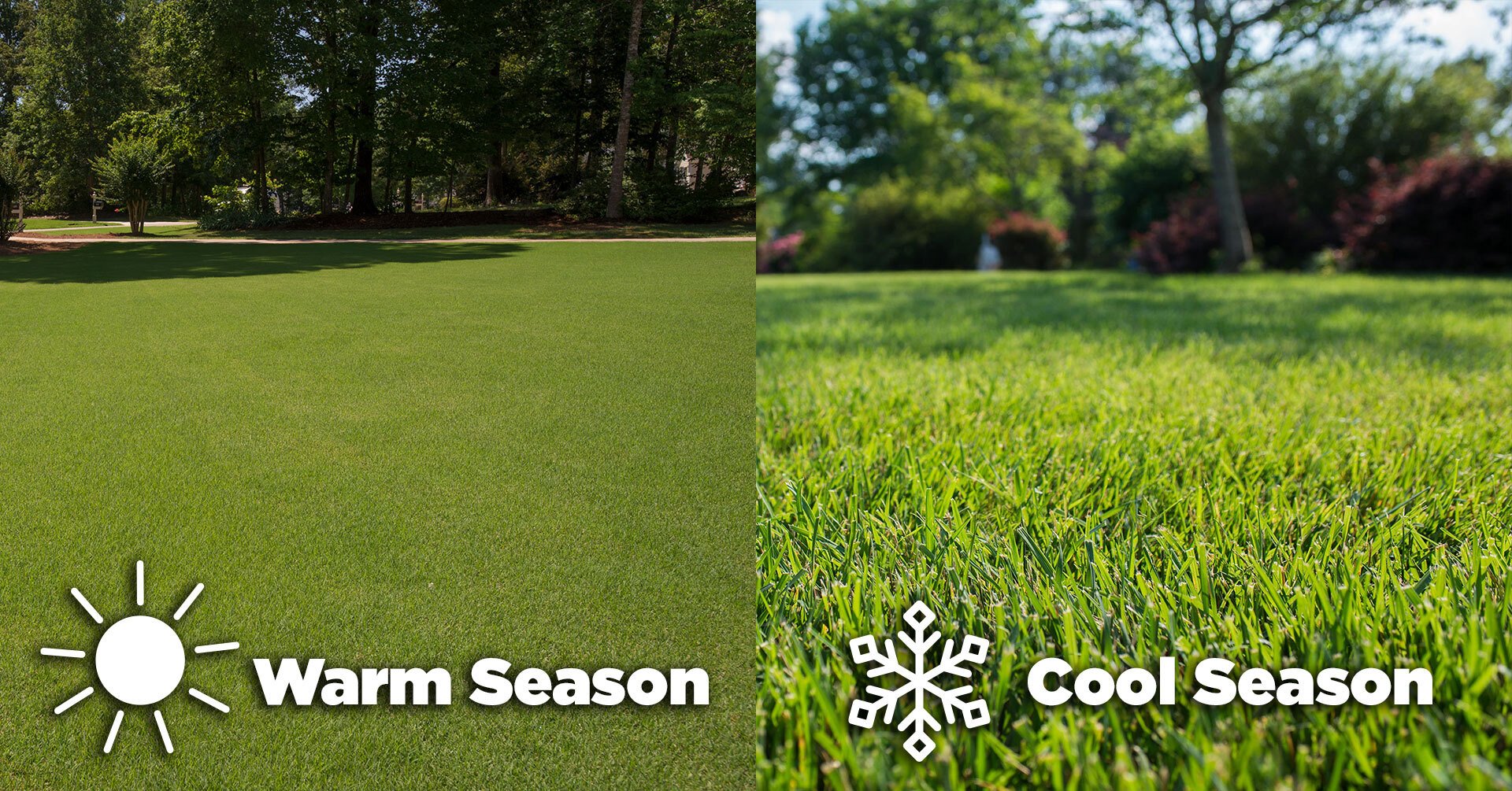
3 Differences Between Warm- and Cool-Season Grass Seed

If you just relocated to a new house with an unfamiliar lawn, congratulations on that big decision! However, you may be switching care requirements from warm season to cool season grass or vice versa. Super-Sod experts regularly answer questions about Fescue-to-Zoysia or Centipede-to-Fescue conversions. There are some key differences, especially when it comes to seeding.
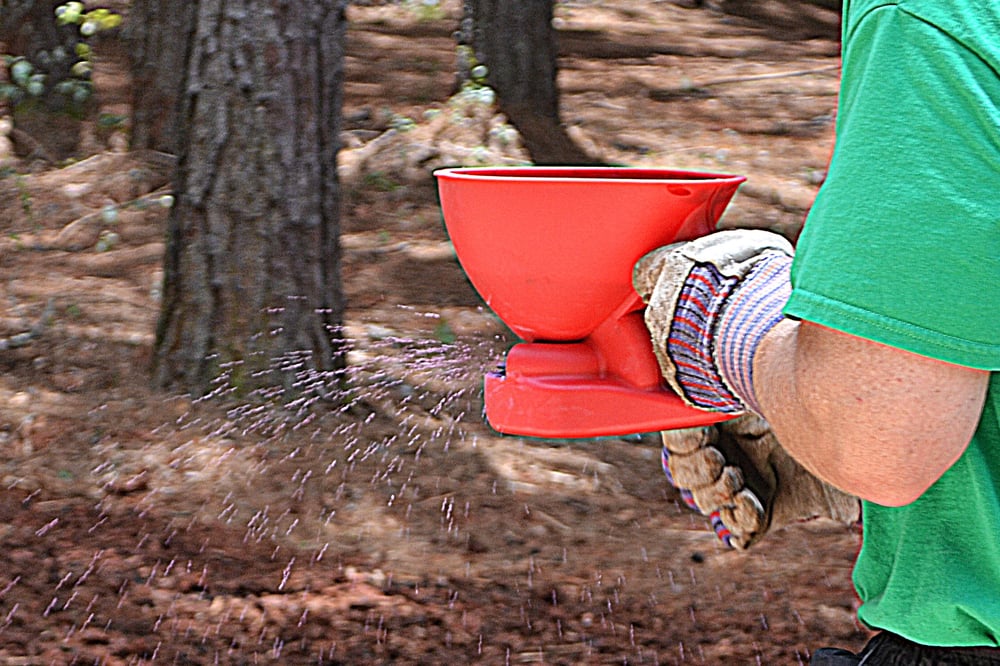
The seed spreader pictured distributes TifBlair Centipede seed, a small warm-season grass seed that germinates within one month and creates a thick, fully-established lawn within a year.
Luckily, you don’t have to be the expert. In today’s blog post, we’ll clear up the differences between seeding warm and cool season grasses.
1. Timing
Warm season grass seeds such as Zenith Zoysia and TifBlair Centipede shudder at the thought of frost. Chilly temperatures can affect the germination process and kill your carefully sowed seeds. Plant after the last chance of frost in the spring. Spring weather doesn’t evaporate water as quickly as the summer’s scorching heat, and springtime planting gives your lawn ample establishment time before the end of growing season.
The absolute last chance to plant warm season grass seeds is a minimum of 60 days before the first expected frost of autumn. To be safe, simply plant before the end of July. To get an idea of when you should plant, search your average local frost dates with the Old Farmer’s Almanac frost calculator.
Cool season grasses like Elite Tall Fescue won’t thrive if seeded during the heat of summer. Plant a new Fescue lawn or overseed an existing one between September and November when temperatures are lower and won’t require such vigorous watering. You may plant Fescue until as late as April in the Southeast, though fall planting is ideal.
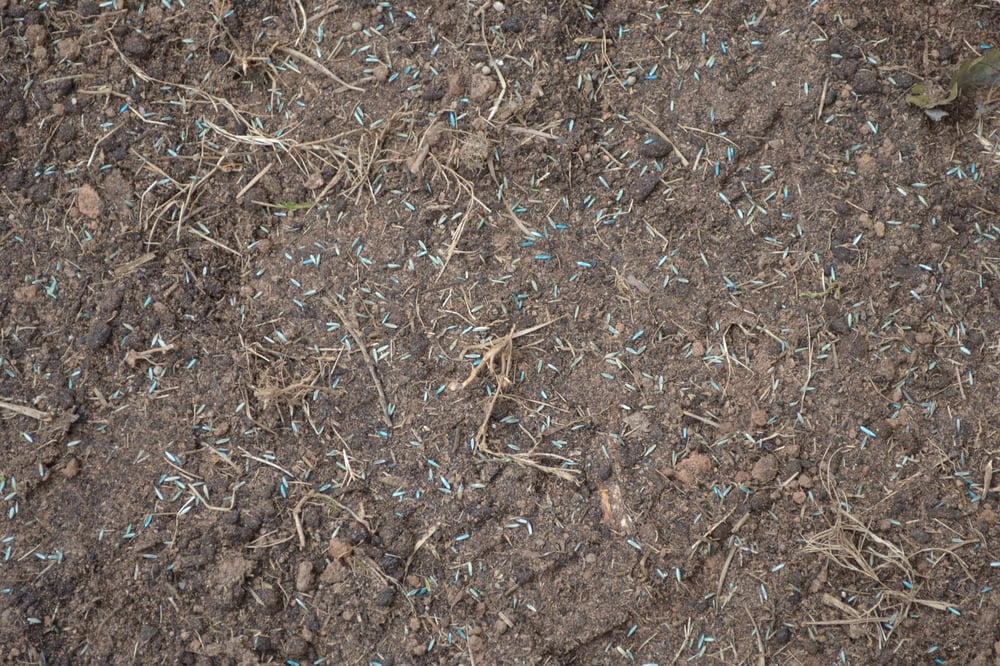
Elite Tall Fescue grass seed (pictured) should be planted in cool months, ideally September through November in the Southeastern US.
2. Establishment Rates
Warm season seeds will germinate within one month and will likely be tall enough to mow in another month. However, it takes a while to nurture a fully established lawn from Zenith or TifBlair seeds. You’ll need to wait an entire year before seeing your ideal thick lawn come to life. Don’t worry, the patience is worth it!
Cool season lawns like Elite Tall Fescue take only a few days to germinate and begin growing. With Fescue, you’ll see a fully established lawn within a month.
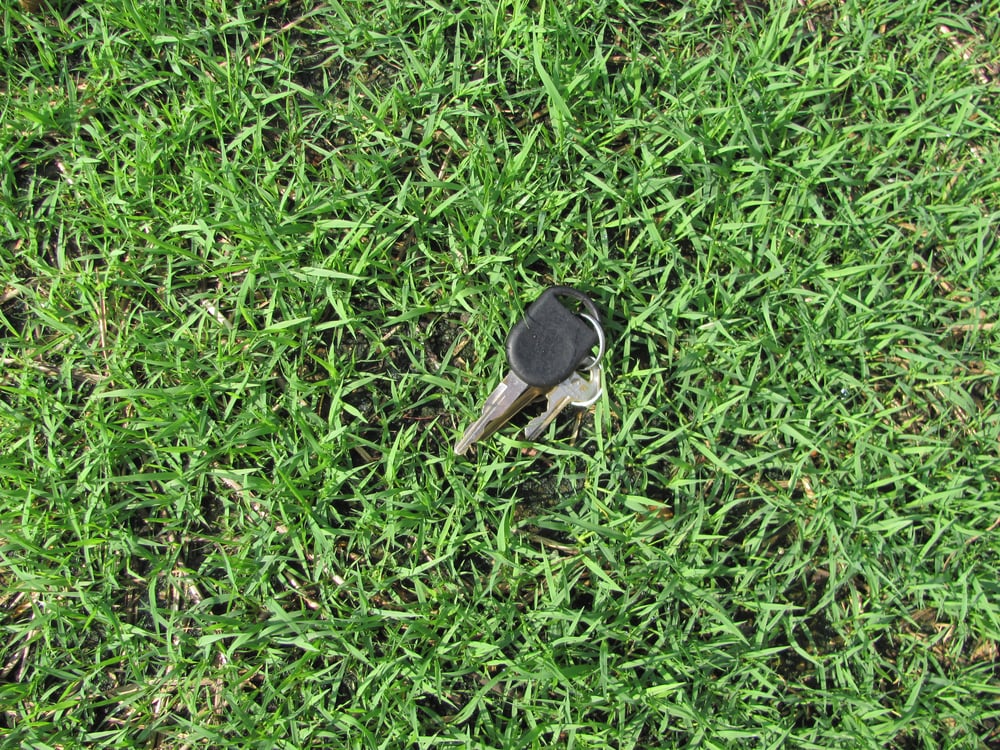
This Zenith Zoysia lawn was seeded four weeks before the photo was taken but hasn't reached mowing height yet. After four weeks, a seeded Fescue lawn would have been mowed already.
3. Overseeding Requirements
Overseeding is not necessary for Zenith Zoysia, TifBlair Centipede, and many other established warm season grasses because of their natural tendency to spread. Though it may be tempting to overseed with the remainder of your grass seed, have faith that your lawn will fill itself out in the thin spots as it gets established. If you have damaged, bare areas in your lawn use extra seed to repair those areas.
Note: We advise against overseeding your warm season lawn with ryegrass or other temporary grasses that will make your lawn green in the winter.
Because Southern summer heat can damage your cool-season Fescue lawn, aerate and overseed in the fall. Fescue doesn’t spread like its warm-season friends and will need your help to repair sparse areas.
Keep Building Your Knowledge
Now that you know the basic differences between warm and cool season seeding, find other subtle grass type variations in our Lawn Maintenance Guides.
To dive even deeper, sign up for the Super-Sod email newsletter and receive monthly lawn tips specific to your area and grass type.





